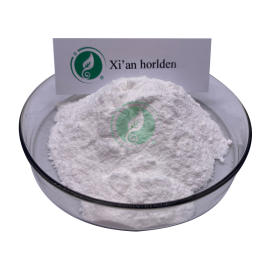Cao Xuetao and others found the first in-cell DNA immunometric recognition subject
-
Last Update: 2021-02-26
-
Source: Internet
-
Author: User
Search more information of high quality chemicals, good prices and reliable suppliers, visit
www.echemi.com
the early hours of July 19th, the latest issue of Science published online the papers of Cao Xuetao, a member of the Chinese Academy of Engineering and president of Nankai University, in the form of a long-form study.
According to the paper, the team discovered a new type of natural immune identification subject, called hnRNP-A2B1, that senses and screens invasive viral DNA, is able to identify viral DNA in the nucleus, then activates natural immune signaling paths and induces interferon production, initiating a natural immune response response to remove DNA virus infection. This work opens up a new direction in the field of natural immunity and inflammation research.is an important physiological function, the body relies on this function to identify "self" and "non-self", destroy and reject the invasion of the virus and other pathogenic substances, to maintain their own stability. After years of exploration, scientists have made great progress in identifying the molecular mechanisms of dna of exogenetic pathogens and their antiviral immunity.
natural immune bodies found so far that can identify viral DNA are present in cytostes. In 2013, for example, Science reported on a major discovery by a team of Chinese scientists, Chen Zhijian, that a protein called cGAS can identify viral DNA in cytostes.
, however, the vast majority of DNA viruses infect host cells and enter the nucleus to release viral genomic DNA and replicate it inside the nucleus. The nuclei have a dense and orderly structure and have long been regarded as "immune exclusion zones". Cao Xuetao and his team, who have long been working on cutting-edge immunology research on the presence of natural immune identification molecules in the nuclei of cells and how to identify pathogen DNA entering the nuclei of cells, are fascinated by the two scientific questions of "immune exclusion zones".
wanted to see what happened in the nucleus of the cell after the DNA virus infected the host cell. Referring to the original intention of the study, Cao Xuetao admitted.In order to screen for natural immune subjects in the nucleus of cells that can identify viral DNA, Cao Xuetao led The Postdoctoral Wang Lei and Wen Mingyue, a lecturer at the National Key Laboratory of Medical Immunology, to launch the "needle in a haystack" study.
researchers used two methods: one using biotin-labeled viral genomic DNA to precipitate DNA binding proteins from nuclei extracts and perform mass spectrometrography, and the other using two-dimensional electrophoresis combined mass spectrometrometography to identify protein molecules that move from the nucleus to the cytoplocyte after DNA virus infection.
" both methods are aimed at obtaining target protein molecules. Cao Xuetao introduced that the two methods obtained hundreds of molecules, cross-comparison, screening out 23 candidate molecules.
, they screened a series of in vivo and off-body functions to identify a target molecule, heterogeneity cell KERP A2B1 (hnRNP-A2B1). This is what scientists are looking for to identify natural immune-recognition subjects in the nucleus dna of viruses.Cao Xuetao told China Science that, in fact, hnRNPA2B1 is an "old" protein whose "normal function is to bind to RNA".
, the researchers delved into the new role of the "old" protein. According to the researchers, hnRNPA2B1 occurs after DNA virus infection and demethylation occurs at the 226th arginine (Arg226) site, and then transsigned to the cytoplasm to form a complex with STING and other interactions, activating the TBK1-IRF3 signal transducting pathway to initiate interferon and other gene expression.
same time, the study also found that hnRNPA2B1 can amplify and enhance the natural immune molecular signaling path path in cytoplocytes, induce more interferon production, and effectively trigger natural immune response.
" study deepens people's understanding of natural immune regulation and provides potential new targets for drug development for antiviral therapy and inflammation prevention. Cao Xuetao said.
he also revealed that the paper was originally based on the "Science" "Express" type of article contributions, and then the editorial department into a heavier weight of the "long text" category of articles received.
recent years, Cao Xuetao's team has conducted systematic research in the two directions of natural immune and inflammatory diseases, tumor immunotherapy and immune escape. Over the past six years, the team has published 11 papers in the top journal Science, Nature, and Cell.
paper information:
This article is an English version of an article which is originally in the Chinese language on echemi.com and is provided for information purposes only.
This website makes no representation or warranty of any kind, either expressed or implied, as to the accuracy, completeness ownership or reliability of
the article or any translations thereof. If you have any concerns or complaints relating to the article, please send an email, providing a detailed
description of the concern or complaint, to
service@echemi.com. A staff member will contact you within 5 working days. Once verified, infringing content
will be removed immediately.







